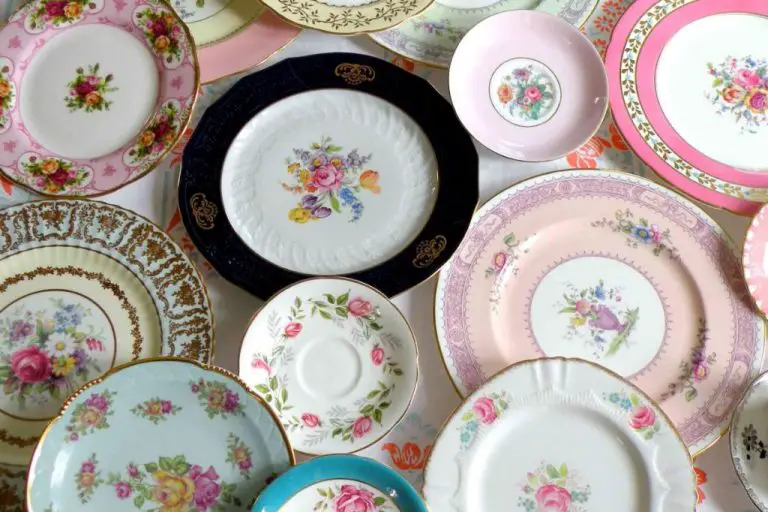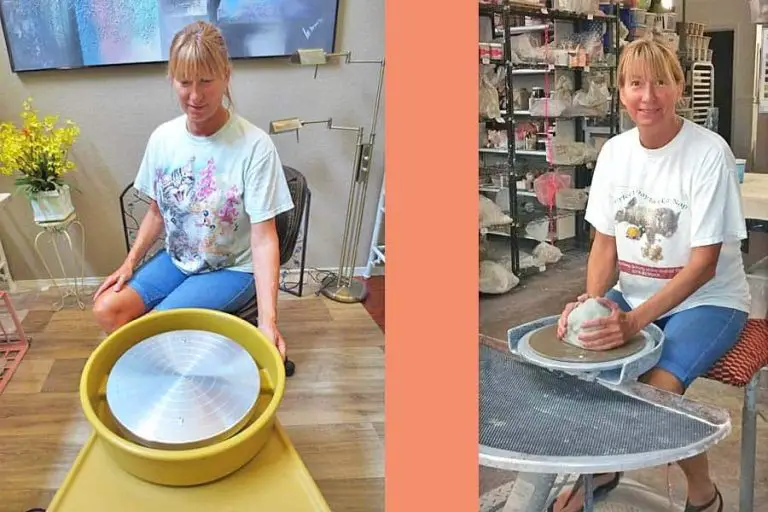What Is The Slab Method Of Clay?
What is the Slab Method?
The slab method is a technique for hand-building clay pottery and sculpture using smooth flattened sections or “slabs” of clay. It involves rolling out clay into flat pieces that can be cut, shaped, joined together, and manipulated to create functional pottery and decorative objects.
The origins of the slab technique can be traced back thousands of years to ancient cultures around the world that created hand-built pottery. However, the slab method became more widely used and refined starting in the 20th century as ceramic artists embraced hand-building techniques as an alternative to wheel-thrown pottery.
The basic process of the slab method involves first preparing your clay and wedging it to remove air bubbles. The clay is then rolled out evenly using a rolling pin or slab roller to the desired thickness, typically 1/4 inch to 1/2 inch. These clay slabs are flexible and can be cut into shapes, joined together using slip and scoring techniques, shaped using molds, and built up to create both functional wares and sculptural forms.
Clay Selection
When working with the slab method, the type of clay you select is an important consideration. Clays like stoneware, porcelain, and terra cotta are commonly used for slab building. These clays are dense, with a high silica and kaolin content that gives them more structure and stability for constructing slab pieces.
Clays well-suited for slabbing have several key properties:
- Plasticity – The clay holds together well but is pliable enough to roll out into flat sheets.
- Stability – The clay can be rolled to an even thickness without cracking or warping as it dries.
- Durability – The fired clay will be strong and hard enough for functional or sculptural work.
- Low shrinkage – The clay won’t shrink too much during drying and firing to cause cracking or warping.
Stoneware and porcelain clays tend to have an optimal balance of these properties. However, some earthenware clays can also work if they have enough clay content and are not too coarse or porous. The clay body should be homogeneous and smooth for rolling uniform slabs.
Rolling Out the Clay
Once you’ve selected the appropriate clay for your project, the next step is to roll out the clay into slabs. There are two main techniques for rolling out clay into even, flattened slabs – using a rolling pin or a slab roller machine.
If using a standard rolling pin, you’ll want to work on a flat, non-stick surface like a canvas or wooden work board dusted lightly with cornstarch. Start by kneading the clay briefly with your hands to soften it and make it more malleable. Form the clay into a ball or thick cylinder shape. Applying even pressure, roll the pin over the clay, forward and back in different directions. Rotate the clay 90 degrees every few passes to ensure it flattens evenly on all sides into a slab. Add cornstarch as needed if the clay begins to stick. Roll until the slab reaches the desired thickness. Aim for approximately 1/4″ or thinner for lighter projects like tiles or plates. Thicker 1/2″-1″ slabs can be used for heavier sculptural pieces.
A mechanical slab roller machine automates this process with two counter-rotating rollers to flatten the clay. Feed a chunk of conditioned clay through the rollers on the widest setting first. Then gradually narrow the gap between the rollers with each pass to reduce the slab thickness. The clay is flattened evenly by the weight of the rollers. This produces a smooth, level slab faster than hand rolling. Thickness guides on the machine help achieve a consistent size. Slab rollers allow rolling very thin sheets under 1/4″.
Both rolling methods can impart texture into the clay. Press light texture sheets or materials like lace into the clay while rolling to transfer patterns. Clay impression mats and stamps can further decorate slabs.
Cutting & Shaping
Once the clay slabs have been rolled out to the desired thickness, the next step is to cut and shape the slabs into the forms you need for your project. There are a few main techniques for cutting and shaping clay slabs:
Using Templates: For geometric shapes or repeating design elements, using a template ensures consistency and accuracy. Templates can be made from cardboard, plastic, wood, or thick plastic templates. Simply lay the template on top of the slab and use a craft knife or needle tool to cut along the edges.
Cutting Freehand Designs: For organic, flowing, or one-of-a-kind shapes, cutting freehand with a craft knife allows for creativity. Mark the design lines first with minimal pressure to guide your cuts. Cut slowly and smoothly for clean edges. A rotating cutting mat can help achieve smooth curves and circles.
Smoothing Edges: Once cut, smooth any rough edges by gently rubbing with your fingers, a moist sponge, or a rubber rib. Round off sharp corners or points. Refine details with needle tools. Smoothing the edges helps the clay pieces join neatly.
Joining & Attaching
When working with slab clay, you’ll need to join the individual pieces together to form your sculpture or project. There are a few techniques for seamlessly joining clay slabs:
Score and Slip Method
Scoring and slipping is the most common method for joining clay. Use a sharp tool to lightly score or scratch the surfaces you want to join. This helps the clay adhere better. Next, use a paintbrush or finger to apply some watered-down clay slip to the scored areas. Then firmly press the pieces together.
Using Liquid Clay Slurry
For a stronger bond, you can make a batch of liquid clay slurry instead of just watered down slip. Mix equal parts clay and water to form a smooth, pourable mixture. Brush the slurry onto the joining surfaces before firmly pressing together. The slurry will dry and form a strong clay adhesive.
Smoothing Seams
Once joined, blend and smooth any seams by gently rubbing with your fingers, a sponge, or sculpting tool. Use a damp sponge to moisten and soften the clay at the seams to completely blend away any cracks or ridges. Let the piece dry slightly before final smoothing.
Texturing & Stamping
Texturing and stamping allows you to add visual interest to your slab built pieces. There are many tools and techniques you can use to imprint textures and patterns into the clay.
Tools for Imprinting Textures
Some common household objects that can be used to imprint textures include:
- Bottle caps
- Door knobs
- Nuts and bolts
- Fork tines
- Buttons
- Lace
- Leaves
Press these objects gently into the clay slab before drying to imprint their texture and pattern.
Making Custom Stamps
You can also make your own custom stamps out of clay, wood, foam, or other materials. Use cookie cutters, modeling tools, or carve shapes by hand. Make sure stamps have a flat base so they imprint cleanly into the clay.
Ideas for Patterns
Consider repeating shapes, geometric designs, nature-inspired textures, or abstract patterns. Layer different stamps and textures together for more complex effects. Keep in mind the overall style you want to achieve with your finished piece.
Drying & Firing
Allowing clay pieces to dry completely before firing is a crucial step. Air drying flat pieces for 1-2 weeks is recommended. For sculptures and thicker pieces, drying can take 4-6 weeks. Rushing the drying risks cracking and exploding in the kiln. Use fans to circulate air and accelerate drying if needed.
For bisque firing, slowly ramp up to 180-220°C and hold for 30 minutes per 1 cm thickness. A standard home kiln will bisque fire in 2-8 hours depending on the size and number of pieces loaded. Bisque firing permanently hardens the clay through sintering and prepares it for glazing.
When glaze firing, ensure bisque pieces are fully dry before applying glazes. Use multiple thin coats of glaze for even coverage and richness of color. Adhere to the glaze manufacturer’s specifications for firing temperature and ramp speeds. Cool glaze fired pieces slowly over 4-8 hours to prevent cracking from thermal shock.
Project Ideas
The slab method opens up a wide range of project possibilities. Here are some of the most popular slab clay projects to try:
Slab Clay Bowls
Bowls make for great beginner slab projects. Roll slabs into round or square shapes, cut them to size, and join the edges to form the bowl walls. Add texture with stamps, carve patterns, or press in embellishments before drying and firing.
Serving Trays
For a practical and decorative piece, craft a serving tray from slab clay. Cut a base slab and side walls, smooth the joints, and add handles or feet. Trays can be left plain or decorated with cutouts, patterns, and more.
Wall Plaques
Slab clay is perfect for making wall art and decor. Roll out and cut custom shapes, use letter stamps or texture plates, allow to dry fully, then display your finished plaque with a wall mount.
Coasters
Make functional drink coasters by cutting small square or round slabs, imprinting designs, letting them dry, then glazing and firing. They make great gifts or home additions.
Tips & Tricks
When working with slab clay, it’s important to avoid cracks as the clay dries. Here are some tips to prevent cracking:
Avoid thin areas: Slab clay less than 1/4 inch thick is prone to cracking. Roll slabs to at least 1/4 inch thickness.
Smooth the seams: When joining slabs, smooth the seams thoroughly on both sides to remove any air pockets. Air pockets create weak points that can crack.
Dry slowly: Let slab pieces dry slowly, away from direct sunlight or heat. Quick drying causes the exterior to contract before the interior, resulting in cracks.
Use slip: Brush liquid clay slip over seams and joints to strengthen them as the clay dries.
When moving unfired clay pieces, take care to prevent breakage:
Lift with support: Move pieces using a stiff board, kitchen spatula or sheet of drywall held underneath for support.
Transport vertically: Carry pieces vertically rather than horizontally to avoid drooping and cracking.
Cushion the surface: Set pieces on soft surfaces like towels or foam during transport to prevent imprints from hard surfaces.
For storing slab projects that are drying or already fired:
Allow airflow: Place pieces with adequate space around them so air can circulate freely.
Avoid plastic: Do not wrap unfired clay in plastic wrap or bags, as this prevents drying and promotes mold growth.
Shelve carefully: Use soft rubber bumpers on shelving to avoid imprinting fired pieces.
Advanced Techniques
Once you’ve mastered the basics of the slab method, you can move on to more advanced techniques to expand your sculpting abilities and creativity.
Using Molds with Slabs
Pressing slabs into molds is a great way to create uniform shaped pieces like bowls, vases, and platters. Roll out slabs to an even thickness slightly larger than your mold. Press the clay carefully into the mold, smoothing out any wrinkles or air pockets. Let it dry partially before removing from the mold. Then tidy up the edges and let dry before bisque firing.
Combining with Coils/Pinch Pots
You can combine slab construction with other handbuilding techniques like coils and pinch pots. For example, build up the basic form with slabs, then add decorative coils along the edges. Or use pinch pots as feet or handles for slab-built vessels. Mixing methods allows for more creativity and intricate shapes.
Sculpting Figures
Slab construction can be used to sculpt figures and statues. Roll out long tapered slabs for arms and legs. Cut shapes for the head, body and other features. Use slip to join the parts. Add coils for details like fingers. Prop up with clay or other materials while drying to avoid slumping. Hollow out larger sculptures before firing to prevent cracking.


